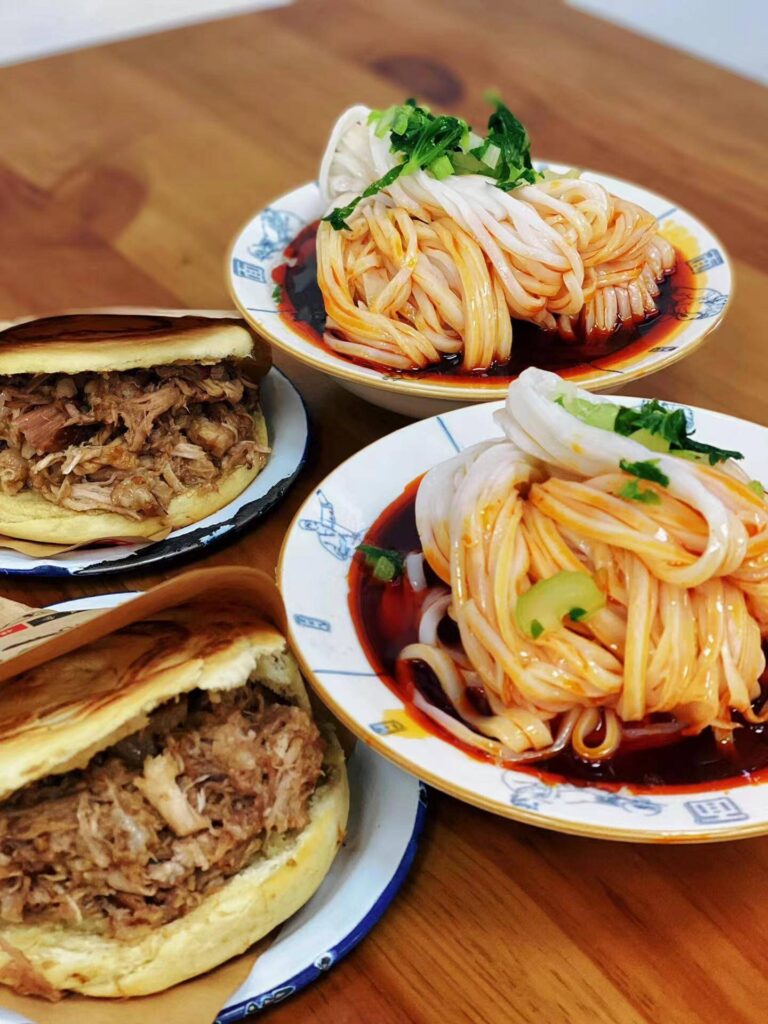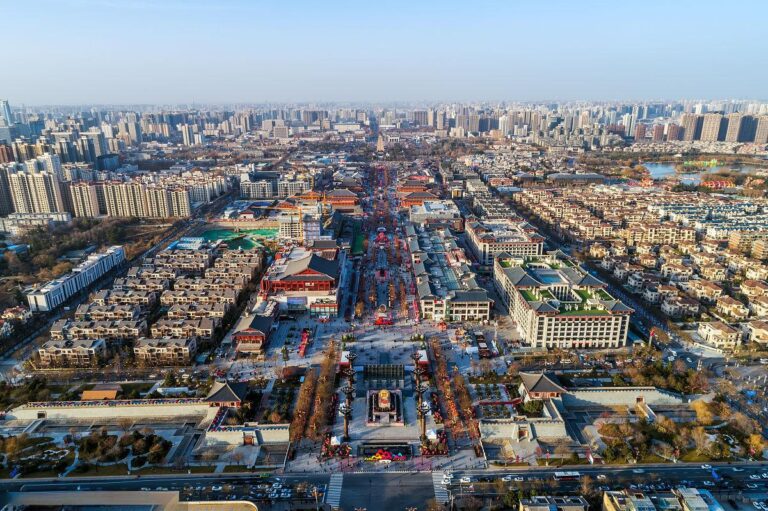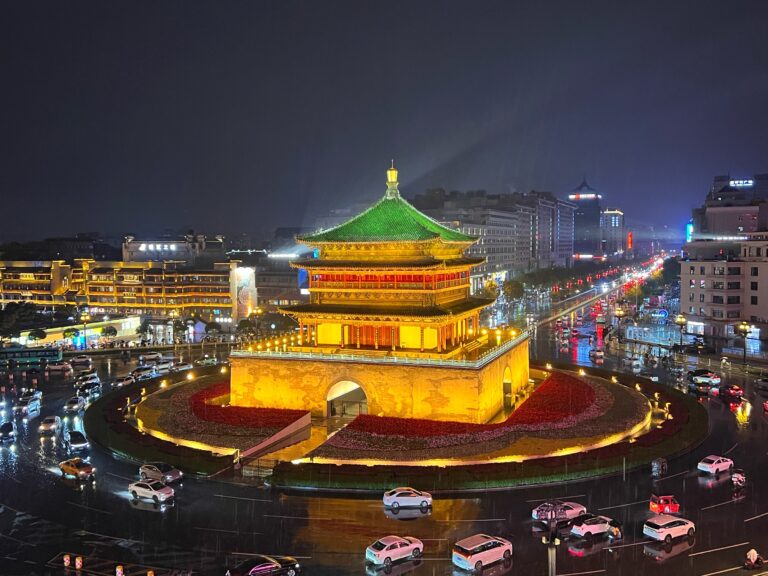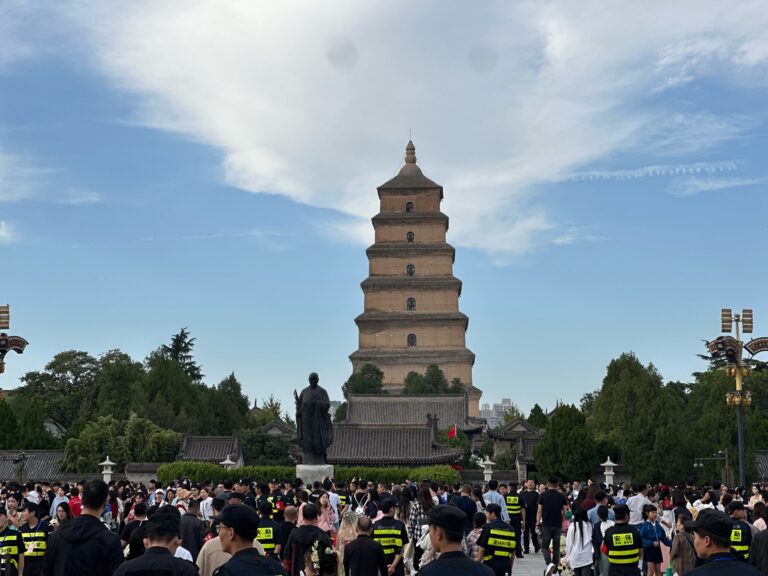Where is the original Xian Famous Foods?
Where Were Xi’an’s Famous Foods Born? Take a Bite Back 2,000 Years!
Hey American food explorers! Pack your appetites and curiosity – we’re landing in Xi’an, China’s glorious “Carb Empire”! Sure, the Terracotta Army will wow you, the city walls will make your legs ache… but Xi’an’s true soul code? It’s hiding in those steaming, fragrant, hole-in-the-wall eateries! Want to know where that first bite of Roujiamo or that first slurp of Lamb Soup was born – on which street, by which stove? Buckle your “foodie seatbelt” – we’re going on a delicious “Flavor Archaeology Dig”! Mission: Find the “Birth Certificates” of Xi’an’s Top Eats!
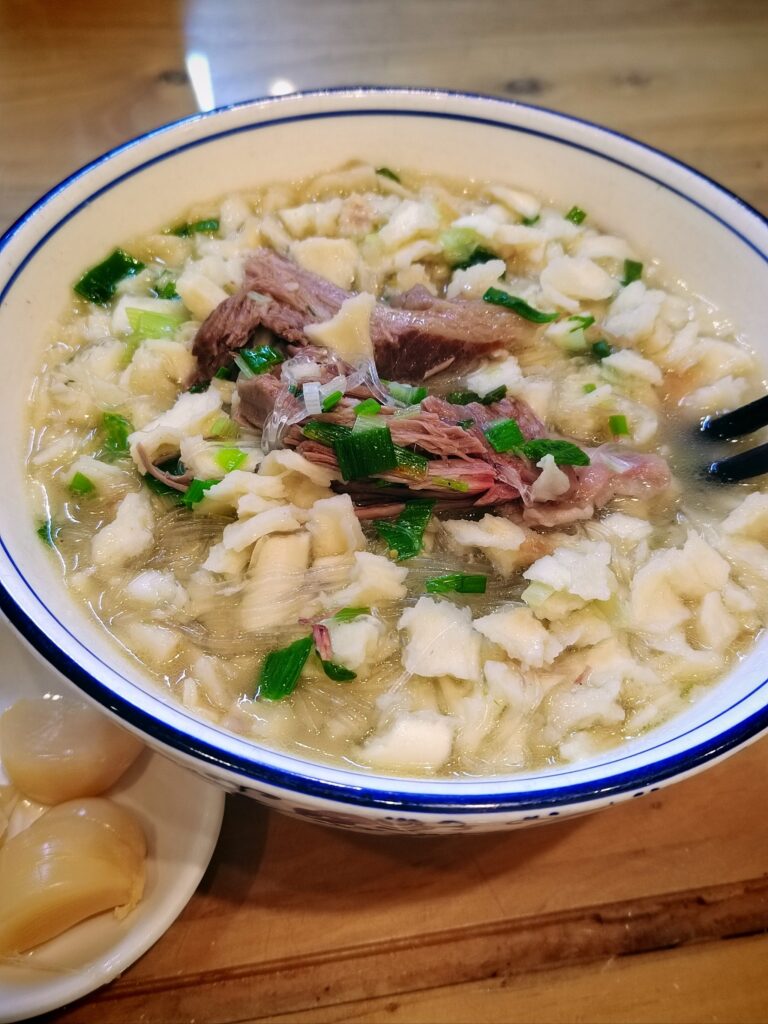
Stop 1: Lamb Paomo’s “Ground Zero” – Tongshengxiang & Laosunjia (Mutton/Beef Paomo)
- Location Pin: Xi’an’s Muslim Quarter (especially Xi Yang Shi & Da Pi Yuan alleys) is Paomo’s HQ. But the OG legends? Two century-old giants:
- Tongshengxiang (同盛祥): Founded 1920. Original spot was near the Bell Tower. Now has branches everywhere. It’s National Intangible Cultural Heritage – a big deal!
- Laosunjia (老孙家): Even older! Founded 1898! Its roots are deep in the Muslim Quarter, now also a Paomo empire.
- Why Here? Xi’an was the Silk Road’s start. The Muslim Quarter has always been the heart of the beef/lamb trade and halal food. Slow-simmered bone broth + dense bread? Perfect for cold Northwest winters and Muslim traditions. Imagine Silk Road traders centuries ago, squatting by simple stalls, breaking bread into hot broth for warmth and energy – that’s Paomo in its wild, original form!
- How to Eat It Now: Don’t worry, no squatting! Step into these legends. Feel the vibe: Get a ticket, queue up, break your bread yourself (Tiny bits = Pro Level!), hand it over for the rich broth & meat. One bowl = history + flavor in every spoonful!
Stop 2: Roujiamo’s “Secret Sauce DNA” – Fanji Braised Pork Burgers
- Location Pin: The undisputed origin of the braised pork Roujiamo is Fanji (樊记腊汁肉夹馍)! Its iconic flagship store is on Zhubashi Street (竹笆市街), Beilin District. Small shop, HUGE line – that’s its street cred!
- Why Here? This is classic Han Chinese street food. Fanji dates back to the late Qing Dynasty! The magic? Their century-old master brine – constantly refreshed, getting richer – a true “time capsule of flavor”. Zhubashi was a bustling market street feeding hungry workers. Roujiamo was born: fuel-fast! Bread must be freshly baked (crispy crust, soft inside), meat must be melt-in-your-mouth, fat & lean mix.
- How to Eat It Now: Head straight to Fanji on Zhubashi Street! Order “Pure Lean” or “Fat & Lean” (Go Fat & Lean! It’s richer!). Eat it IMMEDIATELY! Feel the hot bread, smell that incredible meaty aroma. Warning: Juice may drip – every drop is precious!
Stop 3: Soup Dumpling Royalty – Jia San’s Halal Soup Dumplings
- Location Pin: The name is Xi’an soup dumplings: Jia San (贾三)! Its birthplace and most famous spot is right on Beiyuanmen (北院门), the main drag of the Muslim Quarter! Big sign, always packed.
- Why Here? Jia San put Xi’an’s halal soup dumplings (mostly beef/lamb) on the map! While dumplings might have roots elsewhere (like Kaifeng), Jia San made them legendary right here in the Muslim Quarter. The energy and crowds of Huimin Jie were its perfect stage. Paper-thin skins hold savory meat and piping-hot soup (thanks to meat jelly magic!).
- How to Eat It Now: Dive into the Beiyuanmen chaos! Steam, shouts, trays flying. Order a basket of Beef Soup Dumplings (Classic!). Remember the mantra: “Lift gently, move slowly, open a window (bite a hole), sip the soup FIRST, THEN eat the filling!” Pair it with their sweet Eight Treasure Congee – perfection!
Stop 4: Biáng Biáng Noodles’ “Powerhouse Stage” – Shuyuanmen & Back Alleys
- Location Pin: Hard to pin to one shop. The most authentic, powerful Biáng Biáng Noodles live in old neighborhoods near Shuyuanmen (书院门) or unnamed alleys by the city walls. This is Guanzhong Plain’s ultimate home-cooked power food!
- Why Here? Biáng Biáng Noodles are the KING of Shaanxi noodles! The name comes from the “BIÁNG! BIÁNG!” sound of dough hitting the board. It screams local spirit: Bowl big as a basin! Noodles wide as belts! Toppings & chili oil FIERCE! Shuyuanmen’s old-school vibe hides family-run joints keeping tradition alive. Sitting on a tiny stool, holding a bowl bigger than your face, slurping wide noodles – that’s the soul of Biáng Biáng!
- How to Eat It Now: Forget fancy! Look for old, slightly grubby spots packed with local uncles. The sign might be faded. Order “San He Yi” (Tomato-Egg + Pork + Chili Oil) or “Braised Pork”. Watch the master stretch, slap, boil, and CHILI-OIL-BLAST your noodles! Prepare to be stunned by the portion!
Stop 5: Sweet Cradles – Jing Gao & Zheng Gao’s Moving Carts
- Location Pin: These cute sweets don’t have a famous “home store.” Their soul is with the aunties and grannies pushing carts or carrying poles along Huimin Jie’s main street and alleys! Follow the sweet smells and calls!
- Why Here? Jing Gao: Sticky rice flour steamed quick in tiny pots, stuck on a stick, topped with nuts & sugar – pure walking joy! Zheng Gao (甑糕): NOT Jing Gao! Sticky rice & red dates layered and steamed in ancient-style pots (Zèng), sweet and gooey. They’re the sweet sparkle of Muslim Quarter life – kid magnets, must-try eye candy. Moving carts are their natural, vibrant home.
- How to Eat It Now: Wander Huimin Jie! Spot those steaming, colorful carts! Jing Gao: Buy & eat hot off the stick! Zheng Gao: Usually sold by the bowl. Dig in with a spoon – sweet, sticky bliss!
Ultimate Treasure Map: Hungry Time Traveler’s Guide
Want to “check-in” at these flavor birthplaces? Grab this map!
- Paomo Pilgrimage: Xi Yang Shi / Da Pi Yuan (Muslim Quarter). Look for “Tongshengxiang” or “Laosunjia”. Embrace the bread-breaking ritual! (Order: “One Yangrou Paomo, please! I’ll break the bread myself!”)
- Roujiamo Roots: Fanji Flagship, Zhubashi Street (竹笆市街), Beilin District. Embrace the line – it’s a badge of honor! (Order: “One ‘Fei Shou’ (fat & lean) Roujiamo, please!”)
- Soup Dumpling Central: Jia San, Beiyuanmen (北院门), Muslim Quarter. Soak up the dumpling chaos! (Order: “One basket of beef soup dumplings, one bowl of Eight-Treasure Congee, please!”)
- Hunt Biáng Biáng Soul: Near Shuyuanmen (书院门) or City Wall alleys. Use your nose! Follow the chili scent & “BIÁNG! BIÁNG!” slaps! Dive in! (Order: “One big bowl of Biáng Biáng Noodles, ‘San He Yi’, please! Mild/Spicy!”)
- Catch Street Sweets: Huimin Jie main street & alleys. Stay alert! Spot Jing Gao carts (on stick!) or Zheng Gao sellers (in bowls!). Point & smile! (Order: Point: “One of this colorful one, please!” (Jing Gao) / “One small bowl of that red rice cake, please!” (Zheng Gao))

The Final Forkful: One Bite, A Thousand Years of Flavor
In Xi’an, finding where food began isn’t just ticking a box – it’s a magical conversation with history and everyday genius. Biting into Fanji’s Roujiamo on Zhubashi Street? That rich brine might taste startlingly close to what a laborer tasted a century ago. Breaking bread in the bustling Muslim Quarter? Your fingers connect to the rough-and-ready warmth of Silk Road traders.
These foods started in humble stalls and family kitchens, conquered taste buds, and became Xi’an’s most delicious calling cards. No grand palaces, just incredible staying power. Their story is written in every wisp of steam, every chewy noodle strand, every grain of sweet sugar.
So, dear American friends, next time you’re devouring Xi’an street food, ask yourself: “Where does this deliciousness have its roots in this ancient city?” Explore with that curiosity. You’ll find Xi’an’s flavors don’t just fill your stomach – they’re a time machine to the city’s real, beating heart.
Start eating, Time Travelers! Let flavor be your Delorean! (And hey, maybe that Terracotta Warrior nearby is getting hungry watching you… just saying!) 😉


